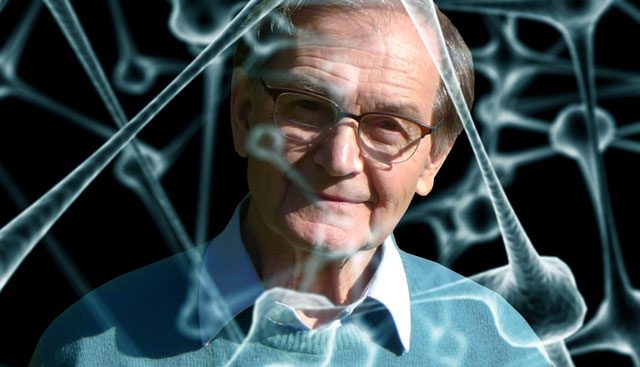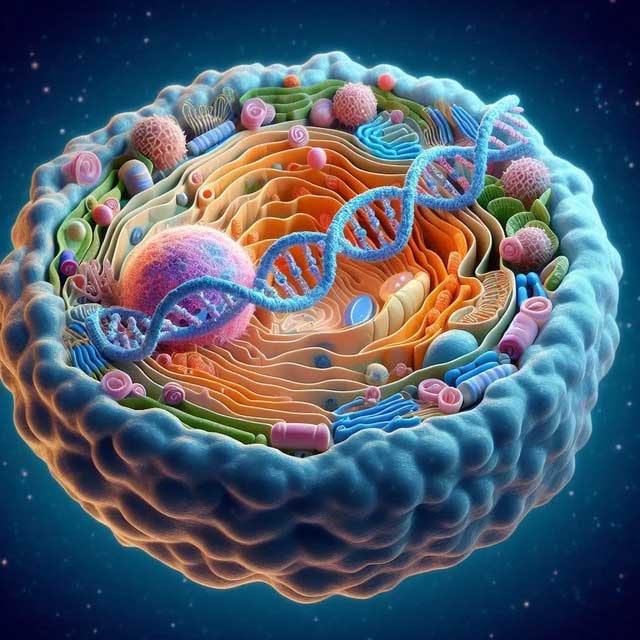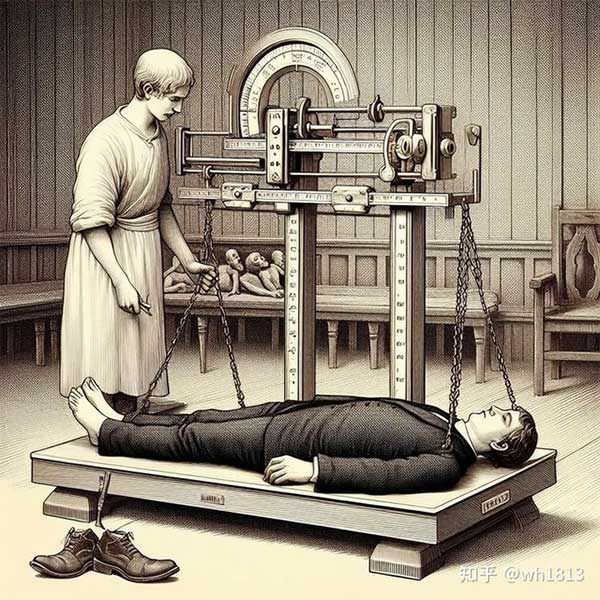Human beings are inherently curious, exploring the origins and end of life. Do we have souls? What is a soul? Where does the soul go after death?
These questions have troubled countless philosophers, theologians, and scientists. In the realm of science, there is a renowned mathematical physicist who not only made significant contributions to the theory of black holes but also proposed a “revolutionary” viewpoint: the human soul is a form of quantum that can return to the universe after death. He is Roger Penrose, the Nobel Prize winner in Physics in 2020.

Physicist Roger Penrose.
Many people may ponder the question, what happens to human consciousness when a person’s life ends? Does the end of life mean the end of everything? Do humans have souls? These questions are not easy to answer as they touch on the boundary between science and metaphysics. Science is based on facts and evidence, while metaphysics relies on beliefs and emotions. However, there are times when there is some overlap and collision between science and metaphysics, such as the study of the soul.
When it comes to the soul, we must address a fundamental question: what is life? In the 13.7 billion years since the universe came into existence, many things have emerged, among which the most complex and mysterious is life. So, what is life? Different fields have different definitions, but from a biological perspective, life refers to a biological function capable of completing growth, reproduction, metabolism, and other biological functions by exchanging matter and energy with the external world and adapting to changes in the environment…

This world is made of matter, and everything, including life, is composed of various types of matter. In the eyes of many, life consists of tiny cells, DNA, etc. However, this perception is not entirely accurate, as the core of life is actually consciousness. (Illustrative image).
Like dark matter, it is something mysterious that we cannot currently see or touch. Any living organism possesses a certain level of consciousness, whether it is an animal or a plant, whether it is a simple life form like bacteria and viruses or a higher life form like humans, all possess consciousness, but the strength of that consciousness varies.
The consciousness of living organisms such as plants and bacteria is weak, while the consciousness of complex animal species is relatively strong; the consciousness of advanced intelligent life forms like humans is even more mysterious and complex. As the only advanced intelligent beings on Earth, humans possess the strongest consciousness, and at the same time, human consciousness holds many secrets that we have yet to discover.

A living body can be described as a combination of tangible matter and an intangible mysterious consciousness. (Illustrative image).
A living body can be described as a combination of tangible matter along with an intangible mysterious consciousness; for instance, humans are intelligent beings composed of a body that we can see combined with an intangible mysterious consciousness. No form of life can escape a fundamental law: birth, aging, sickness, and death. Even advanced intelligent life forms like humans age step by step from the moment they are born.
So, what happens to consciousness when the human body ceases to function? Does it die with the body or continue to exist in another form? This leads to a scientific hypothesis about the soul, known as Penrose’s quantum soul theory.

Physicist Roger Penrose and Stephen Hawking.
Roger Penrose, a British mathematical physicist, holds a doctorate from the University of Cambridge and is an honorary professor at the University of Oxford. Penrose was a close friend of Hawking, and he proposed a concept called “singularity point”, which is a point with an infinitely small volume and infinite density.
Through calculations, it was concluded that a singularity point would form when a massive star collapses, which is known as a black hole. Based on this, Hawking suggested that perhaps our universe originated from such a singularity point. This theory is referred to as “Penrose’s theorem”. Due to this discovery, Penrose won the Nobel Prize in Physics in 2020. Later, he even raised a “taboo” subject in the scientific community, asserting that the human soul continues to exist in quantum form; after death, the soul leaves the human body and returns to the universe.

Penrose believes that no matter how advanced current AI becomes, there is one aspect that will never match that of a normal human.
In 1989, Penrose wrote the book “The Emperor’s New Mind”, in which he proposed that no matter how advanced artificial intelligence may become, there is one aspect that will never compare to that of a normal human. Intuition can also be understood as the soul or consciousness. According to Penrose, artificial intelligence encompasses all logical activities and can never escape its mechanistic nature; however, phenomena such as consciousness can only exist within quantum systems.
So how did humans develop consciousness? Pense’s answer is that within the human brain, there are many electrons in a state of quantum entanglement; whenever these electrons collapse, humans will have different thoughts and ideas, these electrons continue to collapse and entangle, and this is what is called the soul or consciousness.
However, while this may seem quite scientific, the theory he subsequently proposed and his explanation of the soul carries a metaphysical flavor. He argues that after an organism dies, the soul does not vanish; the quantum information within it is not destroyed but leaves the body and returns to the universe. This explanation closely resembles the mythical concept of the soul.
In simpler terms, the soul will continue to exist in the universe. According to this assertion, many uncertainties suddenly arise in our universe. If the soul is immortal, where does it go?

The soul weighing experiment.
The earliest scientific research on the soul is the soul weighing experiment. In 1901, a surgeon named Duncan MacDougall conducted a soul weighing experiment based on the belief that the soul has weight and leaves the body after death; therefore, by measuring the weight difference between life and death, the weight of the soul could be determined.
Basing his hypothesis on this, Duncan, using his position as a surgeon, sought out several volunteer patients for the experiment. Near the end of their lives, they were placed on a special hospital bed equipped with a special measuring device underneath. Once the experiment began, he discovered a remarkable phenomenon: the weight of some participants suddenly decreased by 21 grams at the moment of death. He believed this was the weight of the soul.
Subsequently, he also measured the weight of dogs in a similar manner and was surprised to find that their weight did not change at all after death, leading him to conclude that only humans have souls, while animals do not.

Only humans have souls, while animals do not. (Illustrative image)
In 1907, the New York Times published the results of MacDougall’s experiment, causing a stir and facing criticism from many scholars for various unreasonable aspects of the experiment, particularly regarding the experimental data which had several shortcomings. When a person dies, their body temperature suddenly rises, and at this moment, the sweat released would cause a sudden weight difference; the reason dogs showed no change was due to their inability to sweat.
Later, perhaps out of necessity, MacDougall came up with another bold idea; he abandoned the soul weighing experiment and proposed to use special light to capture out-of-body scenes. If a person dies, the soul would actually leave the body, and thus it could be photographed in a special way.
He then attempted to use X-rays to capture the scene of the soul leaving the body, but unfortunately, no results were achieved before he passed away.

The study of the soul remains a topic of research related to death, leading some scientists to propose “near-death experiences.” (Illustrative image).
What is a near-death experience? The period of unconsciousness from the moment a person suffers a severe injury until they are successfully revived is called the near-death phase. Through interviews with a large number of dying patients, scientists have discovered that during this time, many extraordinary and similar experiences occur, which is referred to as a near-death experience.
For example, individuals may feel their consciousness leaving their body, review their lives, and some even report encountering deceased loved ones. Strangely, nearly all of them have out-of-body experiences. This raises the question: Why do patients from all over the world share similar experiences? How do these experiences occur? This is a significant issue in the study of near-death experiences.
So how did Penrose explain this? Penrose proposed that human near-death experiences are equivalent to a program of a quantum computer in the brain, a program that continues to exist in the universe even after death. In other words, he believes that the soul is a form of quantum matter, which, after leaving the human body, returns to the universe. This may sound a bit complex, but we must start with quantum mechanics.
In quantum mechanics, there is a concept called superposition, referring to the phenomenon where a minuscule quantum entity can exist in multiple states simultaneously. This state of the quantum entity closely resembles our consciousness or soul; could it be a type of quantum state?
In 1994, Harvard University in the United States published the results of a study revealing that the human brain contains a structure known as “microtubules”, which are widely distributed in the brain’s neurons, resembling strands, and these structures exhibit properties similar to quantum superposition. Later, Penrose joined this research and, along with Stuart Hameroff, director of the Center for Consciousness Studies at the University of Arizona and a professor of psychology and anesthesiology, proposed a “orchestrated objective reduction” model to explain the quantum phenomena of consciousness.

Penrose’s theory is an attempt to scientifically explain the existence of the soul. (Illustrative image).
The basic idea of the orchestrated objective reduction model is that human consciousness is created by microtubules in the brain. The quantum states within these microtubules continuously orchestrate and undergo objective reduction. Each objective reduction creates a moment of consciousness, and these moments of consciousness constitute our thoughts and emotions. When the human body dies, the quantum states within the microtubules do not disappear but instead enter the quantum field of the universe, which is the immortality of the soul. Penrose and Stuart Hameroff believe that this theory can explain several phenomena in near-death experiences, such as out-of-body experiences, life reviews, and encounters with the deceased, as these are predictions of consciousness generated when quantum states undergo objective reduction.
Penrose’s quantum soul theory is a scientific attempt to explain the existence of the soul, based on knowledge of quantum mechanics and neuroscience, but it is also influenced by metaphysics.
While this theory has a certain scientific basis, it remains controversial, particularly regarding how to verify and prove its validity. Currently, scientific research on the soul is still exploratory, with no definitive answers. Perhaps, the nature of the soul lies beyond the realm of science and can only be understood through faith and emotion.


















































